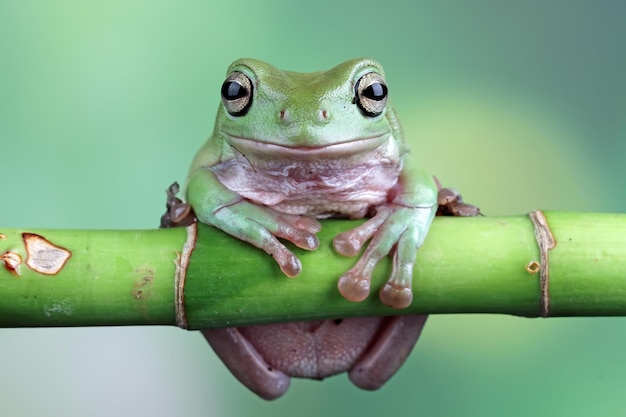Interesting Facts About Glass Frogs

Glass frogs are a species of frog known for their transparent skin.
These unique frogs can be found in the rainforests of Central and South America.
Glass frogs have a distinctive green coloration, which allows them to blend in with the foliage.
Despite their transparency, glass frogs are not easily spotted due to their small size.
The transparent skin of glass frogs allows their internal organs to be visible.
Glass frogs have a sticky underside on their feet, which helps them cling to leaves and branches.
These unique frogs have long fingers and toes, which aid in their arboreal lifestyle.
Glass frogs are known for their loud and distinctive calls, which can be heard throughout the rainforest.
The calls of glass frogs are often used to attract mates during the breeding season.
Glass frogs lay their eggs on leaves overhanging water bodies such as streams and ponds.
The transparent eggs of glass frogs are vulnerable to predation, so they must be carefully guarded.
The male glass frog is responsible for guarding the eggs until they hatch.
Glass frog tadpoles develop within the eggs and eventually drop into the water below.
These tadpoles have a more traditional appearance, with a greenish color and no transparency.
Like most frogs, glass frogs are carnivorous and feed on insects, spiders, and other small invertebrates.
Glass frogs have excellent vision, which allows them to spot prey in low-light conditions.
Interesting Facts About Glass Frogs part 2
Despite their small size, glass frogs have a voracious appetite and can consume a large number of insects daily.
Glass frogs are not poisonous like some other frog species.
The lack of toxicity in glass frogs may make them more vulnerable to predation, but it also means they are harmless to humans.
Glass frogs are highly territorial and will defend their chosen leaf or branch from intruders.
These frogs have a unique behavior known as foot-flagging where they raise their hind legs to signal aggression.
Glass frogs have a relatively short lifespan, typically living for 3-5 years.
The habitat loss and fragmentation of rainforests have had a significant impact on glass frog populations.
Certain species of glass frogs are listed as endangered due to habitat destruction and pollution.
Conservation efforts are being implemented to protect glass frogs and their fragile ecosystems.
Scientists are studying glass frogs to gain a better understanding of their unique adaptations and behavior.
The transparency of glass frogs has inspired artists and designers in creating unique glass sculptures.
Glass frog exhibits in zoos and museums provide the opportunity for people to observe these fascinating creatures up close.
Glass frogs serve as an indicator species for the overall health of their ecosystems.
Their presence or absence can provide valuable information about the state of the rainforest.
Glass frogs have long been revered in indigenous cultures for their mythical qualities.
They are often associated with purity and the ability to see beyond the surface.
Glass frogs are excellent climbers, utilizing their long limbs to navigate the dense foliage.
Their adhesive toes allow them to cling to surfaces, even when they are upside down.
Glass frogs are predominantly active at night, making them nocturnal animals.
These frogs have a low reproductive rate, typically laying only a few eggs at a time.
Glass frogs have evolved to have larger eyes compared to their body size, enhancing their vision.
Due to their transparent skin, glass frogs are susceptible to dehydration and require a moist environment.
Glass frogs have been studied for their unique anti-adhesive skin properties, which could have implications in developing new medical technologies.
The transparent skin of glass frogs makes them difficult for predators to detect, providing them with some measure of protection.
Some glass frog species are known to engage in territorial fights, using their long hind legs to wrestle with rivals.
Despite their small size, glass frogs have a powerful jump, launching themselves several feet to escape danger.
Glass frogs are well adapted to their arboreal lifestyle, with specialized toe pads for gripping slippery surfaces.
These frogs are highly sensitive to changes in their environment, making them bioindicators of environmental health.
The fragility and delicate appearance of glass frogs serve as a reminder of the importance of preserving our natural world.